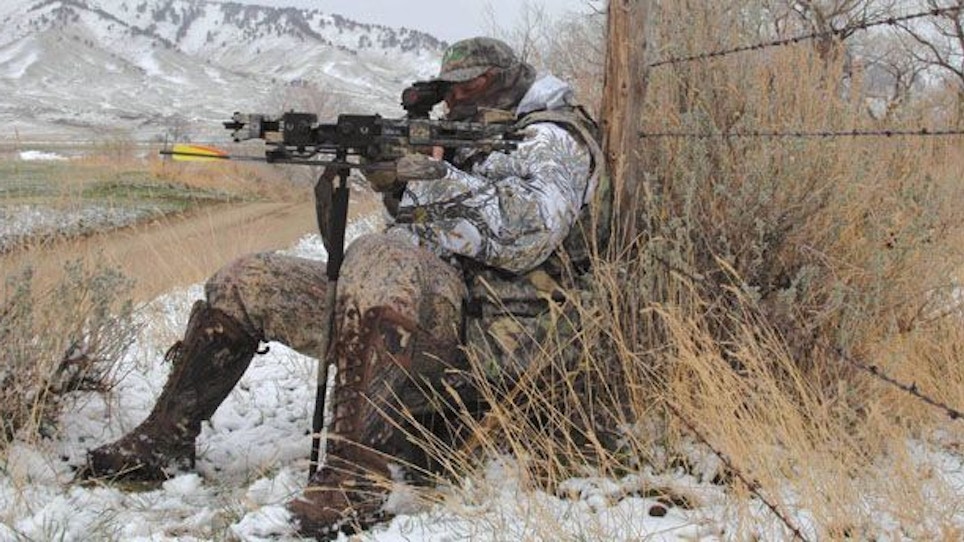 When it comes to equipment-wrecking cold, the worst that I’ve ever experienced was as a 2nd Lieutenant of Engineers in Alaska — 68 degrees below zero (F) and 40 mph winds. I had to put both hands on one part of the steering wheel and pull hard to steer my Jeep even though it had been lubricated with Arctic-weight grease. Two days before that, I saw a 3-foot-long steel wrench snap in half after being dropped to the frozen ground. Metals, lubricants and polymer components that work fine at room temperatures have a tendency to fail when exposed to severe cold, which is why the U.S. Army located its Arctic Test Center at Ft. Greeley.
When it comes to equipment-wrecking cold, the worst that I’ve ever experienced was as a 2nd Lieutenant of Engineers in Alaska — 68 degrees below zero (F) and 40 mph winds. I had to put both hands on one part of the steering wheel and pull hard to steer my Jeep even though it had been lubricated with Arctic-weight grease. Two days before that, I saw a 3-foot-long steel wrench snap in half after being dropped to the frozen ground. Metals, lubricants and polymer components that work fine at room temperatures have a tendency to fail when exposed to severe cold, which is why the U.S. Army located its Arctic Test Center at Ft. Greeley.
It’s the same with crossbows. Crossbows have more mechanical components and more complex shapes than vertical bows. Because of this, when using a crossbow for a cold-weather hunt, it’s wise to follow the suggestions given to firearm hunters, such as storing guns away from heat sources until they reach ambient temperatures and having little or no lubricant on operating mechanisms. These steps keep optical components clear and keep mechanical assemblies from failing to launch an arrow or not developing full velocity due to cold-stiffened lubricants.
Crossbow Selection For Cold-Weather Hunts
It’s a good idea to pick a crossbow with functional systems that are few and simple, increasing the bow’s cold-weather reliability. The more gadgets and gizmoes and mechanical components a crossbow has, the higher the chance of something going wrong with one of them. Consider a recurve-limb crossbow. Because it has no cams, it’s got fewer parts that can get fouled up in extreme conditions. For one of my hunts on Kodiak Island, I selected a Fred Bear F-300+ crossbow. During that hunt I was subjected to sub-freezing temperatures, blowing snow, 40 mph winds and alder tangles. At times the gusts were so strong that my arrow was blown off the shooting deck. I had to stop to bang the freezing snow off the crossbow periodically. When conditions were at their worst, I took glove liners and put them over the cams and carried the crossbow upside down to keep the snow from accumulating in the barrel channel. When the time came to kill a deer, the crossbow worked.
Degreasing
There are several degreasing products sold in spray cans with extension tube nozzles. Two that I have tried are Birchwood Casey’s Cleaner-Degreaser and Rusty Duck’s Gun Action Solvent. Otherwise, rubbing or grain alcohol (on cotton swabs) can be used to strip rail lube from the crossbow. If possible, install a new string without any wax residue. An unwaxed string will work better in the cold, and a shortened string life is inconsequential if it helps your crossbow develop full velocity to take a nice deer. Use degreasers to remove lubricant from the trigger, cams and any other mechanical systems. If the crossbow gets wet, dry it with rags and cotton swabs, spray the interior parts with WD-40 to displace water, and then spray with the degreaser. Return to the cold, let the cold soak in and check the crossbow’s functionality by shooting a few practice arrows before resuming the hunt.
Confirming Functionality
rThere is no substitute for allowing the crossbow to become accustomed to the cold and then shooting targets at various ranges to check the zero on the sighting system and confirm arrow drop at various ranges. It’s better that a component fails on the practice range than in the field with a deer in front of you. A couple of shots each at 20, 30 and 40 yards will usually be sufficient. Tromping around a range at 20 or 30 below is no fun, but is a necessary exercise.
Back-Up Equipment
When hunting in challenging conditions on what might be a once-in-a-lifetime hunt, it is prudent to bring a backup crossbow. It’s easy to slip on a snow-covered rock, bang a cam on a boulder and end a hunt on the spot. Even an old crossbow with iron sights and a 25-yard point-blank kill range looks very good when your new super-humdinger is broken.
Rangefinders And Optics
Not only must you care for your crossbow, you should also carry spare, warm batteries for your rangefinder and red-dot sight. Cold weather reduces the functional characteristics of batteries, causing them to produce less energy for shorter periods. If one of the crossbows has optical sights, I strongly suggest the other be equipped with peep-and-pin sights for use on stormy days when lenses become too caked with snow and ice to be useful. There are spray-on lens coatings and wipes available. These work in rain, but are not effective in freezing rain or wet, clinging snow.
Don’t Give Up
However warm and cozy the camp might be and however convivial the companionship, you can’t kill many deer in camp. Dress in your cold-weather gear, take enough stuff and go out and hunt. If properly prepared, you and your crossbow can get the job done — cold or no cold. I experienced this on Georgia’s Cumberland Island when the temperatures dropped below zero. Many of the other hunters never left camp. I had my Alaskan cold weather stuff and I hunted. Only six deer were taken, and I killed two of them. Don’t let the cold stop you.






